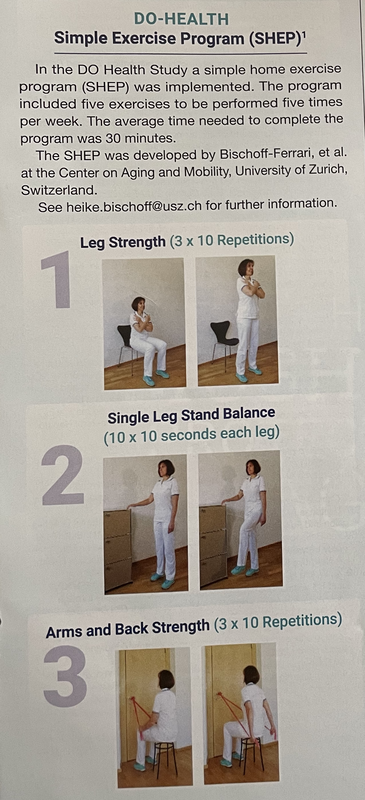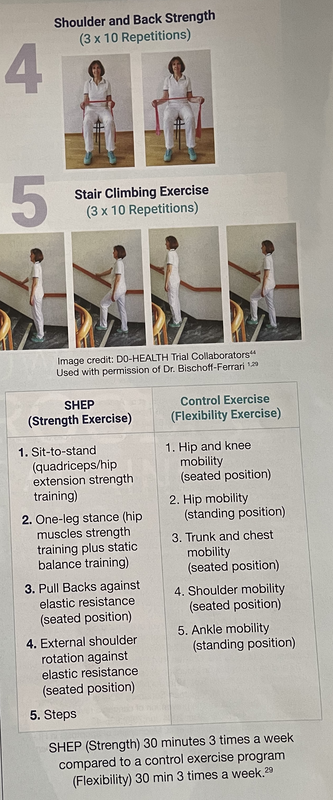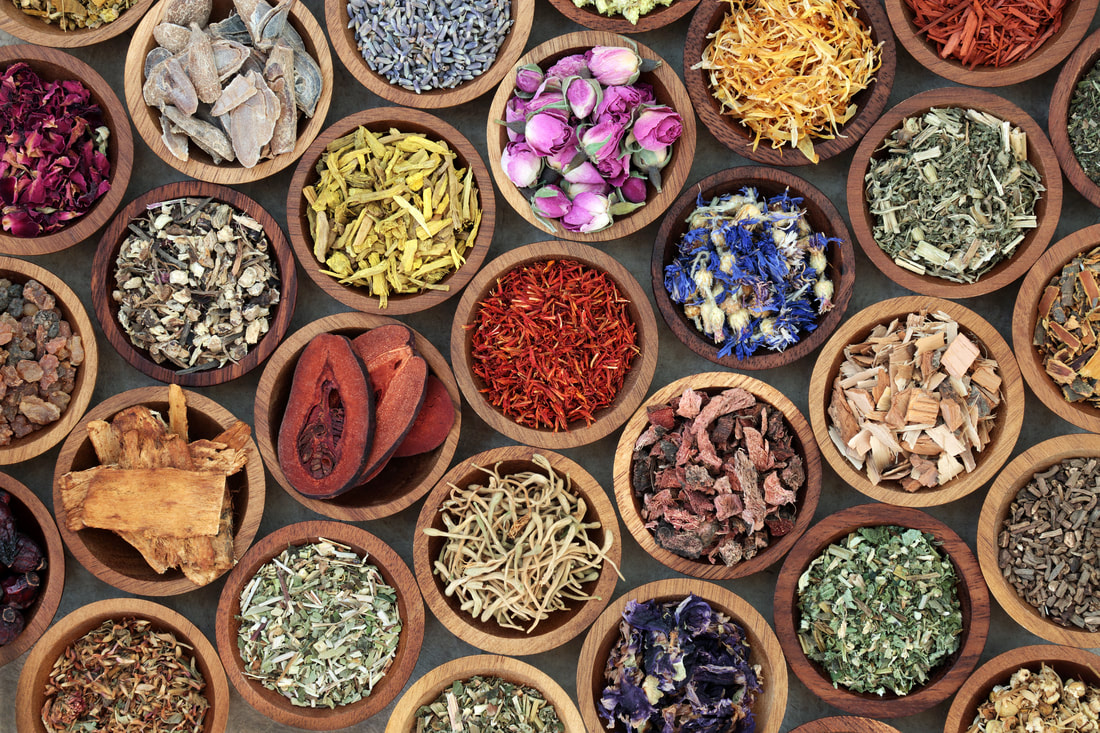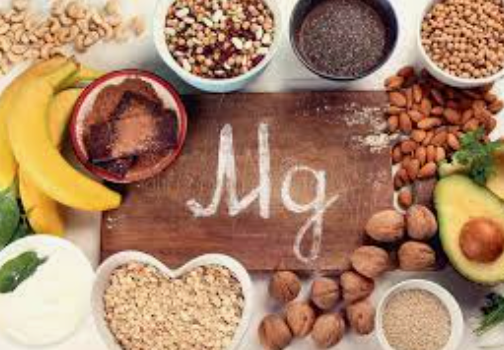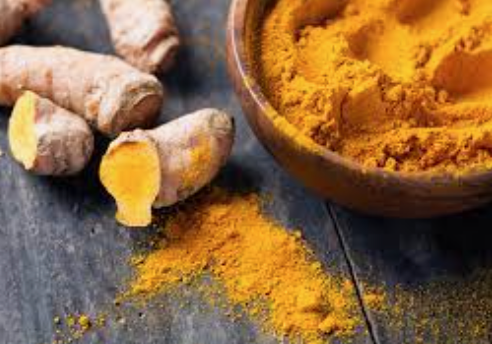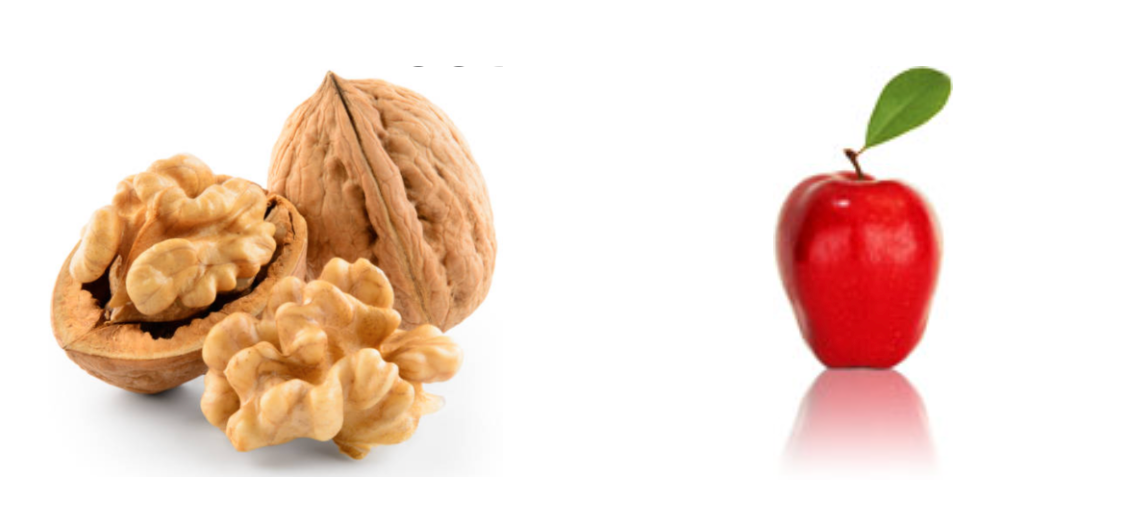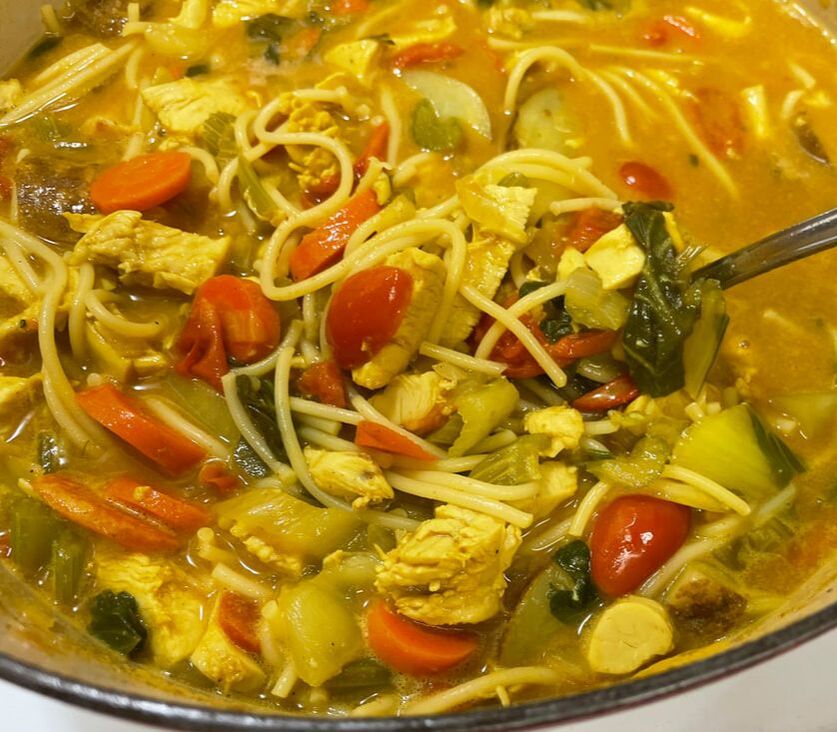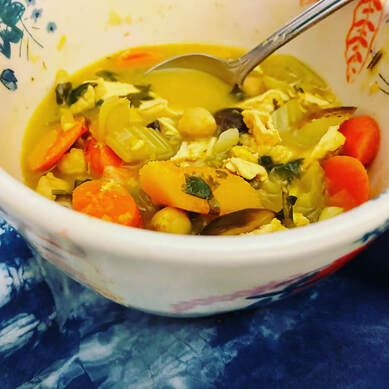|
3 Easy and Affordable Ways to Reduce Your Cancer Risk by over 60%!
For one of the first times, a study (a tightly monitored, randomized, controlled, clinical trial--for you science and research nerds out there) looked at concurrent use of supplements and exercise in older adults and how it affected their risk of invasive cancer. Turns out, using multiple, easy, inexpensive interventions together is almost 3 times as effective as using them separately. This is one of the largest clinical trials of its type. Here are the 3 things the study found you can do to cut your risk of invasive cancer by over 60%! 1) Supplement with Vitamin D daily. Experts show that those individuals with Vitamin D blood serum levels of between 50 and 80 ng/mL have consistently lower risks and incidences of cancer and neurological diseases like Parkinson's and Alzheimer's diseases. Vitamin D downregulates growth factors that fuel cancer AND regulates genes that protect against cancer cell propagation. Have your Vitamin D blood levels checked if you're unsure of where your levels are. Here's an inexpensive one from Life Extension. (You pay; they send you paperwork, and you take it to your nearest Labcorp for the blood draw; you get results within a few days via email.) Here's the liquid Vitamin D I take daily with meals for best absorption. The amount of supplementation in this study was a modest dosage of 2000 IU (50 mcg) daily. That would be just one drop a day of the above product. My blood levels are chronically low, so I take 4 drops daily. 2) Supplement with Omega 3's daily. Omega 3 fatty acids inhibit cancer cell growth by impeding chronic inflammation, suppressing angiogenesis, and inducing tumor cell apoptosis (senescent / deranged cell "suicide"). This study used an algae-sourced form of Omega 3 (vs. cold water fish-sourced) that provided 333 mg EPA and 667 mg DHA per dose, which, like the Vitamin D, is also pretty modest. Here's the Omega 3 supplement I take daily from Life Extension (I LOVE their products!). It relieves my dry eyes, joint pain and inflammation, and keeps my triglycerides and HDL cholesterol in check (they go up when I don't take this supplement). I take 2 caps daily, which provides 700 mg EPA and 500 mg DHA. 3) Do simple, home exercises for 30 minutes, 5 times a week to protect against tumor progression by stimulating tumor cell apoptosis (senescent / deranged cell suicide) as well as increasing an enzyme in cells called AMPK that helps downregulate cancer cell proliferation. These exercises are part of a protocol called "SHEP" (Simple Home Exercise Program). Most of you are probably already doing more, but if you're not, these exercises can be done by anyone, anywhere. Protocol for SHEP is to perform each of 5 exercises 5 times a week. These are super-basic, and there are many variations of each of these to make them harder or more interesting (for example, lunges or squats instead of chair sits or perhaps rowing machine or Pilates Reformer "Back-Rowing" Series instead of pull backs and external shoulder rotation below). Hope that gives you some motivation to keep going and maybe add a few EASY and affordable practices into your daily life! Here are the exercises (they're basically squats, rows, Tree Pose, and stair climbing--super easy!):
0 Comments
Ayurveda to Boost Your Immune System during Cold and Flu SeasonMeghan Hays Ayurveda Salt Lake City
Well, there's no fighting it: it's here! Cold and flu season, that is. And now with COVID to worry about, it's all we can do to keep ourselves stress-free and healthy to avoid becoming sick or to recover efficiently and without complication, if we do. In Ayurveda, fall and early winter are considered the "Vata Season." Vata is one of the three Ayurvedic doshas, or bio-physical forces that govern our minds, bodies, and all of nature. Vata is cold, dry, light, and unstable. If you have a lot of vata in your constitution, you are naturally more dry, mobile, and unstable with a proclivity toward creativity and enthusiasm but also gas, constipation, worry, anxiety, dryness, and fragility in your tissues. Since fall, or vata season, increases all of these qualities for everyone, those with more innate vata will need to double-down on these tips and tricks. Here's what you need to do: 1) Sleep! If you're getting less than 7 hours a night, you're basically setting yourself up for failure in all areas of your life: productivity, mood balance, hormones, immunity, and disease risk. Want to get sick? Sleep less. Here are some extra tips to help, and here's the link to purchase my video on sleep with some unexpected hacks. - Get into a routine around sleep. You need to go to bed and rise at the same times each day so that your nervous system and biorhythms know what the heck is going on. Ayurveda says we need to be asleep by 10pm so that our liver can do its "nighttime janitorial" duties. If you stay asleep past 10pm, you'll get a "second wind" while your metabolism kicks up to detox the body. - Make sure you're winding down well before bedtime (preferably 2-3 hours) with a warm, herbal tea (chamomile, valerian root, lavender, passionflower, and skullcap are all good choices), a warm Epsom salt bath, or some journaling, meditation, or breathing exercises that calm you nervous system and help you let go of the day. - Finish dinner at least 3 hours before bed (so by 7pm if you're aiming for the ideal 10pm bedtime). You sleep better on an empty stomach, and food on the stomach after 10pm interferes with those liver duties I've mentioned above. (An earlier, lighter dinner is also a great way to regulate body weight if that's a goal.) - Take a nap. You can restore and refresh your mind with a short nap, preferably before 3pm so you don't disrupt bedtime. - If sleep is a chronic problem for you, try a daily Yoga Nidra practice (Google "NSDR" and you'll find dozens of free guided yoga nidra meditations on YouTube). Perform during the day, when you wake up in the middle of the night, and/or before bed. Typically, insomnia is caused by an overactive nervous system, so you'll need to begin to implement daily mindfulness practices that teach you how to down-regulate your nervous system while you are awake; yoga nidra is the perfect solution, AND for every 40 minutes of yoga nidra you perform, you'll get the equivalent of 2 hours of sleep. 2) Keep Your Digestion in Tip-Top Shape! According to Ayurveda (and cutting edge, scientific discoveries around the link between the digestive and all other systems of the body), all disease begins in the digestive system. In fall (and perhaps all year-round for those with more vata in their constitution), it's time to give the digestive system warm, cooked, well-seasoned, nourishing foods. Put away the salads, smoothies, and iced beverages. That's just going to make you lighter, drier, and more unstable. It's time for soups, stews, curries, and stir-fries. Trust me, if you've got digestive issues, this usually solves 80% of problems. I repeat: cook...your...food. Also use tons of spices you probably already have in your spice cabinet - they've got so many antimicrobial, anti-inflammatory, and healing properties, especially garlic, ginger, turmeric, cinnamon, cumin, and oregano! Here's the coconut mung bean curry recipeI give basically everyone with a vata imbalance (gas, bloating, anxiety, constipation, etc.) and everyone who could benefit from some nourishing comfort food in the fall or any time of year. 3) Easy fasting gives your body time to fight infection and "detox" naturally. Just like your sleep schedule, your meal schedule plays a huge role in balancing your nervous system. Eat meals and snacks at the same time each day, leaving about 3 hours between each one for proper digestion (or more if you're not hungry). Also, skip the complications of intermittent fasting and just do what nature intended for us to do: finish dinner by 7pm / 3 hours before bedtime, and don't eat again until breakfast. This gives most people an 11 to 13 hour fast. Done! 4) On the digestive note: consider supplementing with a probiotic. Here's the one I take that helped me break a pattern of digestive issues (along with Ayurveda) and has research and study-backed evidence that it enhances your immune system and ability to fight off infection through its bacteriophage technology. 4) Get outside in nature every day. Yep, it might be really cold, but don't neglect the amazing impact that fresh air and sunlight can have on the lungs, hormones, and immune system. Even just 10 minutes a day and/or a walk around your block to check out the sky, hear the birds, and look at some trees can help balance mood, energy levels, and boost your immune system. Ayurveda says this is one of the #1 ways to build our immune systems. I have found it to be a game-changer for me. 5) Sweat Daily. It goes without saying that exercise, or purposeful movement, is one of the best ways to stay healthy. The more consistently you get your heart rate up, the lower your markers for inflammation and the longer you live in better health. 20-30 minutes a day of brisk walking is all you really need, but you can also benefit from yoga or Pilates (done vigorously - think: flowing and standing poses or poses done on hands and knees, bearing weight against the pull of gravity, that get your heart rate up) and/or calisthenics (push-ups, squats, lunges, low-impact aerobics, and other weight-bearing moves using your body, gravity, and or resistance equipment). Shameless plug: my monthly membership provides 2, 30-minute classes a week that do just this! Check it out here! Movement is your ticket to healthy bones, muscles, mind, hormones, and immune system. Beware, however, as over-the-top workouts can leave you depleted. If you choose hardcore workouts or a super-intense system of movement, give your body recovery time of a few days, otherwise you'll actually lower your immune system and defense against pathogens. 6) Be prepared if you do become ill. As soon as I feel myself getting sick, I do two things: - I sleep and hydrate as much as I can - this speeds the healing process immeasurably! - I also take this supplement with zinc, elderberry, and Vitamin C (cease any other Vitamin C supplements you are taking, and follow package directions for duration); I notice a decrease in severity and longevity of all symptoms (sometimes I end up not getting sick at all), including when I had COVID. I also had great success in my own Lung and Immune Tonic in capsule form. I have many clients who reported great relief from COVID symptoms (helped them breathe and clear mucous from their lungs) with this formulation. I have made it available on my website for anyone to order (please allow 2 business days to process before shipping out as I make each order by hand. So bottom line: get enough sleep, manage stress, keep healthy routines around (cooked) food and (daily) movement, don't overload your digestion, and stock up on supplies for when you do feel sick. I hope this helps keep you healthy and happy this fall! Please let me know if you have any questions at Meghan Hays Ayurveda Salt Lake City, or email me here! XO The Benefits of Ayurvedic Tongue CleaningMeghan Hays Ayurveda Salt Lake City
Do you know about the Ayurvedic practice of tongue cleaning? It’s the first thing Ayurveda says you should do each morning, before brushing your teeth, eating, or even drinking water. You want to remove any coating on the tongue with a metal tongue cleaner. Brushing your tongue? Not the same. Your toothbrush just pushes all that gunk back into your tissues…yuck! Clean the tongue by gently scraping from back to front, rinsing between each pass, 7-10 times. This practice completely eliminates morning breath (woohoo!), stimulates your digestive system and metabolism (called “agni” in Sanskrit and Ayurveda), and gives you an opportunity to check out the state of your tongue. Is there coating? If so, this indicates that your digestive system is not working so efficiently and is, in fact, creating toxicity from improperly digested food (what Ayurveda calls “ama”). If left untreated, this ama can form disease and health challenges down the line. If the coating is yellow, it’s mixing with pitta dosha and possibly indicates some heat, burning, or inflammation; if it’s white, it’s mixing with kapha dosha and possibly indicates some heaviness, sluggishness, or even candida; if it’s gray or brown, it’s mixing with vata dosha and possibly indicates some dryness, instability, or even anxiety. Cracking on the tongue can indicate dryness in the tissues of the body. Redness on the tongue can indicate heat, inflammation, anger, or even a fever. Scalloping on the margins of the tongue indicates malabsorption in the digestive tract. Teeth marks (which look different from scallops) can indicate swelling or edema in the tissues of the body. The tongue is a fascinating organ! I hope this was helpful and that you start the ancient practice of tongue cleaning first thing each morning—it’s a game-changer! Check out more about Ayurveda on my website at Meghan Hays Ayurveda Salt Lake City - I work virtually and in-person! (You can find a great, stainless steel (b/c who needs more plastic in their lives?) tongue cleaner from Banyan Botanicals by clicking on the link here FYI; I give one as a gift to all of my clients at their initial consultation. Stainless steel is naturally antimicrobial.) Tongue scraping/cleaning is an integral part of an Ayurvedic morning and hygiene routine. The tongue is the first and most visible part of the digestive system. Cleaning the tongue first thing in the morning not only improves oral hygiene and freshens breath, but it also stimulates the digestive system, promoting a healthy appetite and morning bowel movement. Tongue cleaning is different from “brushing” the tongue with your toothbrush: while a tongue scraper removes coating and toxins from the tongue, a toothbrush pushes them back in. The coating on our tongues, from an Ayurvedic perspective, indicates the presence of ama. Ama is toxicity from poorly or improperly digested food. White, thick coating, mucous, or excess saliva indicate kapha imbalance; yellow or greenish coating or a red/bright pink tongue indicate pitta imbalance; grayish or brownish coating or dryness indicate a vata imbalance. The coating on our tongue can change daily, based on what and when we ate the day before, so it’s important to check yours each morning, before scraping, to note any changes. To properly clean the tongue, gently scrape from back to front 6-10 times, first thing in the AM, before even brushing your teeth. Rinse the scraper between each pass. Finally, rinse your mouth out with warm water and then drink 8-16 oz water to further stimulate digestion and regular elimination patterns. I recommend a stainless steel or copper tongue scraper for their naturally anti-microbial qualities. Allow your scraper to air dry between each use. More Interesting Info from Banyan Botanicals (click here for the whole article): In the western sciences, dentists appreciate post-nasal drip as the cause of bad breath. The post-nasal drip coats the back of the tongue with mucus that is rich in bacteria. This dying bad bacteria produces volatile sulfur compounds that create bad breath. In Ayurveda, we recognize the coating on the back of the tongue as much more than that. The white coating is what we call ama (natural toxins). Bacteria and mucus can certainly be ama. But any toxin that has that sticky and heavy quality, causing dysfunction in the body, is ama. So, while post-nasal drip is certainly one cause of the white coating, there are many people with white tongues who have absolutely no post-nasal drip. Our tongue represents our entire gastrointestinal tract and what is going on there. As the body processes the toxins and puts them back into the gastrointestinal tract for elimination, it also spits them out onto the tongue. Further, oral bacteria is associated with the health of a number of other systems, including the heart, lungs, reproductive tissues, and pancreas, and even the health during pregnancy. The tongue cleaner is the most superior method of cleaning your tongue. One study compared a traditional tongue cleaner (which they called a tongue scraper) with a toothbrush. They found that the tongue scraper decreased volatile sulfur compounds by 75% as opposed to 45% with the toothbrush. But again, bad breath is only one benefit of scraping your tongue with a tongue cleaner. Doing so will support your entire body by helping maintain a healthy bacteria amount in the mouth and by stimulating the cleansing of the entire gastrointestinal tract. It is also a great way to stay in touch with your overall health. By remembering to clean your tongue daily, you will quickly get into the habit of taking note of the coating on your tongue. You may notice a thicker coat after a heavy meal, sickness, or after eating a lot of dairy the night before. If a tongue cleaner is not right next to your toothbrush and floss and is not already part of your daily routine, now is the time to start! Learn more by booking a 2-hour Initial Consultation with Meghan Hays Ayurveda Salt Lake City today! Meghan Hays Ayurveda [email protected] Ayurveda Salt Lake City
Inflammation has been a buzz word and popular topic lately, especially in relationship to the COVID pandemic, an aging baby-boomer population, and an uptick in the diagnosis of autoimmune disorders. So, first let’s answer the question: What is inflammation? Inflammation is an essential part of the regeneration and healing process in the body. Inflammation is actually a beneficial process that keeps up healthy. Inflammation as one job: to wake up the immune system and stem cells. It says, “Hey, something is wrong! We need to either wake up the healing system, the immune system, or both.” Which systems become activated depends upon the illness or injury. Once the healing is done or your illness has run its course, the anti-inflammatory system activates and shuts the process down to get you back to normal. Problems come in when this system doesn’t shut off. This sets us up for a myriad of health problems; in fact, chronic low-level inflammation is the underlying cause of weight gain, early development of various diseases, and acceleration of the aging process. It’s estimated that about 60 percent (that’s over half!) of American live with an inflammation-related chronic condition, such as Type 2 Diabetes and autoimmune disorders, like Hashitmoto’s Thyroiditis, which is the leading cause of hypothyroidism. And when you start out with high levels of inflammation, it’s a vicious cycle. Take, for example, obesity: the adipose, or connective, tissue in the body produces its own inflammatory proteins. So then the fat cells, residing in the adipose tissue, sense the extra inflammatory proteins, and this induces them to make more…which not only causes more inflammation, but can also cause even more weight gain. Often, by the time the inflammation causes a real health problem, it’s been going on for a long time and doing loads of damage behind the scenes, AND, quite often, we’ve been ignoring the subtle warning signs that the body has been trying to give us: skin redness, swelling, join pain, and digestive problems, which Ayurveda would tell us is the first indication that there is something wrong – fix your digestion, heal your entire body). But most people take a pill, or some Pepto, or get on a prescription, which just masks the symptoms so that the inflammation can continue to go unchecked and wreak havoc. But not to fret! There are SO MANY WAYS to immediately reduce your inflammation and take charge of your health. Some are obvious and some are more subtle. They include (and we’ll go over these in more detail and how they affect inflammation): stop smoking, moderate your alcohol consumption (no more than one drink a day for women), eat more plants, don’t overeat, get at least 7 hours of sleep each night, exercise most days of the week, and reduce stress through purposeful breathing exercises, mindfulness, and meditation daily. It’s all the stuff we work on in an Ayurvedic health and healing plan. Small changes each day have PROFOUND results…when done consistently. That’s truly the key: creating daily habits that you can stick with everyday. So let’s talk a little more about the inflammatory process. What triggers inflammation? The National Institutes of Health (NIH) classifies inflammation as your immune system’s response to an “irritant” – which could be an everyday injury like a cut, sprain, or strain, to a serious infection, and everything in between. Some of the common symptoms of inflammation are redness, heat, pain, swelling, and loss of function…all the things that come up around a simple ankle sprain to a major infection. One of the most common inflammation triggers is infection from a virus or bacteria. You feel miserable when you get the flu for 2 reasons: your respiratory symptoms come from the flu virus itself, like runny nose, cough, and shortness of breath, but your muscle aches and fever are from the inflammatory response. They’re actually a good sign that your body is doing its job of fighting the infection. Here’s what’s going on behind the scenes: -When acute inflammation (your body’s immediate and natural response to an injury or infection) happens, your immune system starts producing cells and hormones it needs to heal, so some of those cells dilate or expand your blood vessels to allow for more blood and immune system cells to get to the affected area. So this can cause some general “achiness.” -Fever is also part of the inflammatory response in that a higher body temperature creates an inhospitable environment for pathogens—they can’t survive at even a degree or two higher than our normal body temperature. This, in turn, can affect other body processes in that urination, elimination, and sweating are a way for the body to release heat, so you might urinate more frequently, suffer from some loose stool or diarrhea as the body moves food through the system more quickly, and you might sweat in an attempt to allow the skin to cool off as the sweat evaporates. This is why it’s a BAD idea to take fever reducers, even at high fevers of up to 103*; it disrupts the body’s natural healing process and takes longer to heal. A better use of your energy would be to fast, according to Ayurveda, so that your body can devote energy to this natural inflammatory, or healing, process, instead of having to digest and deal with food. Staying hydrated, however, is key, so consuming natural electrolyte drinks, like water with a little sea salt, lemon, and maple syrup (vs. Gatorade or Powerade, which is full of sugar) is best. -If you have an injury, you will notice other symptoms like swelling, redness, and pain at the local sight of the cut, sprain, or break. Your body responds to injury by sending molecules like white blood cells and platelets, which aggravate the injured area and draw in other chemicals, to start the repair process. So these processes are great, healing, and will stop on their own (or should stop on their own), when the healing or repair has occurred. The problems come in when this process doesn’t stop, is too powerful, or targets the wrong place at the wrong time. So let’s talk about when inflammation is “bad.” 1)Infection: When the immune system stays active for too long or too strongly, something called a “cytokine” storm occurs. This is when the body is overwhelmed by an infection, and the immune system works too hard to protect itself, resulting in an overproduction of inflammatory proteins called cytokines, which can result in multi-organ shutdown. We saw this in COVID-19 patients as a result of other infections, autoimmune conditions, or other diseases. 2)Autoimmune disorders: Normally, our body produces cytokines in an orderly fashion, and everyone knows where they need to go. If the body is overwhelmed with danger, however, inflammation can become systemic (all over the body), and could even cause death. In other instances, too much inflammation can occur when there’s no infection at all, and this is the case with autoimmune disease. We’re not actually sure why this happens, but autoimmune diseases are characterized by an overactive immune system which mistakenly attacks healthy tissues. These disease often result in inflammation and, sometimes, irreversible damage of organs, muscles, joints, or other parts of the body. 3)Aging: Unfortunately, increased inflammation is a “normal” part of the aging process (often called “inflammaging”). As our immune systems decline with age, our protective (“good”) inflammation declines as well, which could trigger “bad” inflammation in that, if you can’t handle everyday irritants, injuries, and infections, the ongoing inflammatory response won’t turn off, resulting in an increase in health problems…which also cause more inflammation. 4)Diet and Lifestyle: Too little sleep, poor quality diet, and/or sedentary lifestyle / not enough exercise can case “oxidative stress.” This is the situation that occurs when there’s an imbalance of free radicals and antioxidants in the body. This triggers the immune system to respond with inflammation. The problem is that there’s no specific disease or injury to respond to, so that body ends up targeting normal cells. Then the body has to repair cells its actually damaging, which causes more inflammation. The results are subtle but can include muscle and joint pain, fatigue and insomnia, weight loss or weight gain, depression and anxiety, digestive issues, and frequent infections. So let’s talk about weight and inflammation b/c they are related. Here’s one way inflammation can cause your weight to fluctuate. Low-grade, chronic inflammation can cause fluid from your blood vessels to seep into your tissues, which then manifests as “water retention” and “weight gain.” If you don’t drink a lot of liquid (or alcohol) before bed, and always have to wake up in the middle of the night to pee b/c your bladder is full, your body is releasing inflammation while you sleep and, therefore, this excess fluid that builds up during your day. If this is you, begin to improve your diet and reduce your stress, and this will stop happening. I think it’s a good, natural indicator of how much low-grade inflammation you have. Inflammation also sets you up for weight gain in that it affects your insulin and blood sugar responses. Remember when we talked about fat cells producing more inflammatory chemicals? And remember that cytokines are a type of inflammatory protein? Fat cells in people with Type 2 diabetes actually produce higher levels of these cytokines; cytokines activate certain proteins that suppress your insulin response. So if your body isn’t responding to insulin, which is what tells your body to uptake glucose, or blood sugar, after you eat, your body will produce more insulin and more insulin (b/c it sees that you still have high levels of sugar in your blood). This, in turn, raises your blood pressure, makes you unnecessarily hungry, and makes you gain even more weight…eventually leading to pancreas and liver problems—not to mention the complications of diabetes to your eyes and extremities. There’s also a direct relationship between stress and insulin in that, when you are stressed all the time, your body is always producing cortisol (the hormone that helps you get ready to run from a perceived threat). When you have more cortisol in your system, your body suppresses insulin so that you have more sugar, or glucose, in your blood (so that you have the energy to run from that danger your body thinks is always right around the corner when you’re chronically stressed). Having high levels of blood sugar also leads to Type 2 diabetes, which then leads to more inflammation through the extra fat cells and cytokine they producing. High levels of blood sugar also cause damage to all of your organs over time. Inflammation also leads to a decrease in leptin, the hormone that tells you you’ve had enough to eat, so this also contributes to more weight gain, and in turn, more inflammation. Fun, huh? Couple that with the possibility that you’re one of the many people who suffer from inflammation of the thyroid, the organ that regulates our metabolism, and this could compound the problem by eventually causing the organ to shut down and stop working altogether. This is a topic for another time (considering it for October or November), but suffice it to say, our diet is the place to start, and COMPLETELY REVERSE, inflammation. There are new studies everyday proving that our gut health (also called the microbiome, which is the name for the trillions of organisms living in your digestive tract that control just about every bodily process and affect every gene we have)…proving that our gut health is the link between humans and disease manifestation. Science is proving what Ayurveda has said for thousands of years: you ARE what you eat; therefore, all health (or disease) begins in the digestive tract. (Learn more about the 5 elements, or foundational principles of Ayurveda here!) So our “standard American Diet” (SAD) and lifestyle are huge culprits. They cause this “bad” inflammation as well, which then leads to type 2 diabetes, obesity, cancer, heart disease, and Alzheimer's just to name a few. These are all diseases that can be directly attributed to lifestyle choices. Sure genetics come into play, but over 99% of inherited diseases are non-determinant. This means that just because you inherited a propensity for the development of a disease, doesn’t mean you will actually develop it. In other words, your diet and lifestyle choices turn on or off your genes. YOU HAVE THE POWER TO DETERMINE YOUR HEALTH (OR DISEASE). This is great news and also scary news for some b/c, more often than not, we don’t want to take ownership over our health. Sometimes it’s easier to be a victim and blame our genetics than take ownership of how we got there. And there’s no shame or blame in owning up to the lifestyle and choices that brought you were you are; there’s opportunity to CHANGE. You can absolutely your health into your hands and reverse what’s going on. I’ve heard someone put it this way, “If genes load the gun, your environment pulls the trigger.” So here are the big inflammatory foods that you should first work to eliminate: -Processed foods (anything with more than 4-5 ingredients on the label or anything you don’t recognize as food) -Sugar and sugar-filled foods, like soda, candy, pastries, and cereals -Fried food -Anything with “partially hydrogenated oil” or trans fats -More than one drink a day for women and 2 for men (the higher the drinks per day, the higher the inflammatory markers go) -And if you smoke, now’s the time to quit in that it spikes inflammation All of these foods led to higher inflammatory and autoimmune diseases as well as higher inflammatory markers Once you reduce these inflammatory foods, make sure to introduce more anti-inflammatory foods: -Blueberries -Apples -Broccoli -Cauliflowers -Cabbage (If cabbage gives you gas, eat it as sauerkraut or kimchi – have a tablespoon or two on the side of your meals each day) -High fiber foods (oatmeal – great delivery vehicle for blueberries and apples – whole grain bread – look for low sugar – other whole grains like bulgur, quinoa – actually a seed – and barley, as well as fruits and veggies) -Micronutrients such as Vitamin D (salmon, canned tuna, and mushrooms – I supplement – good to have tested – levels higher than 50ng/dL associated with lower risks of all cancers and greater neuroprotective benefits) and magnesium (nuts, legumes, avocado, and spinach – I also supplement) -Fish oil (I supplement) and turmeric (use on food or take capsules or you can order here from Banyan Botanicals – I can make for you – 1-4 caps twice daily depending on symptoms – I increase dosage around times I need more healing), cinnamon (natural blood sugar regulator), and ginger (natural digestive and anti-inflammatory) -Tips:
All of these foods lower inflammatory markers. *BTW: Inflammatory markers in blood testing, which you can ask your dr. for are: - CRP (C-reactive protein) - ESR (Erythrocyte Sedimentation Rate) - PV (Plasma Viscosity) – not as widely used *Raised levels of these are indications of inflammation in the body. So eating these foods in the right way is also a BIG part of the picture: 1)Eliminate distractions and CHEW YOUR FOOD. This is a game-changer for most people with digestive problems. If you’re about to swallow your food, stop for a split second and ask yourself, “If I spit this out, would I recognize it (aside from obvious colors)?” If the answer is yes, you need to keep chewing. There’s no magic number of times to chew; just make sure it’s a consistent texture. 2)Leave at least 3 hours between meals before you eat again (if you’re genuinely hungry, eat a snack or have your meal at that time, even if it’s less than 3 hours, but DO tune into that). By leaving yourself time between meals, you allow your body to break down and assimilate all the nutrients properly, and by actually getting hungry, you allow your liver an opportunity to take stored fat and turn it into fuel. (Talk about 3 digestive stages and raw rice analogy.) 3)Similarly, everyone should be giving themselves a natural intermittent fasting window of about 12 hours at the least. You should be done with dinner at least 3 hours before you go to bed. If you’re aiming for a 10pm bedtime, you’ll want to be done eating dinner by 7pm; likewise, dinner should be a smaller meal, while lunch the largest to reflect your metabolic levels at those times of day (metabolism is higher in the middle of the day, just like the sun). This gives your liver plenty of opportunity to get rid of toxins and for your body to release any inflammation built up over the course of the day—to go from fight-or-flight mode to rest-and-digest. If you go to sleep with good on your stomach, the liver has to, instead, assist with digesting it. This is one of the easiest ways to use fasting (a natural way to decrease inflammation) every day. (including your mini-fast between meals). Losing weight generally lowers inflammation and decreases load on joints, which are a common place to experience inflammation symptoms for many people. So reducing portions, giving yourself proper fasting windows, and staying active / moving purposefully for 30 minutes 5 days a week (doesn’t have to be 30 minutes all at once) are all key. People who exercise the most (but not the most intensely b/c that can cause chronic inflammation if you’re always damaging your body without enough recovery time) have the lowest levels of inflammation markers. You don’t have to run a marathon or go to Cross Fit. 30 minutes of moderate walking, dancing, calisthenics, gardening…anything that gets your heart rate up, warms your core body temperature, and makes you just break a sweat before you cool down is all you need. Stressing the body and causing a little, temporary inflammation is good; you come back stronger once you’re repaired. This also strengthens the muscles around and, again, takes load off the joints that may have been damaged from chronic inflammation, whether you suffer from osteoarthritis or an autoimmune disease like rheumatoid arthritis. Exercise also reduces stress, which let’s face it, is a reason many of us overeat, gain weight, get sick and/or have chronic levels of inflammation. We live in a world in which we have “unnatural” stressors. We don’t have to worry about where we get our food or even cooking or preparing it most of the time; we don’t have to worry about the next tribe over invading our village or whether we will get attacked by a lion when we’re out hunting for dinner. The human body adapted over millennia to deal with these stressors by creating a stress response, or an inflammatory response, and then going away once the danger went away. Today, we have constant stressors from media, which shows us war in other countries, natural disasters all over the world, and violent crime…we are bombarded with worries about dramas we can’t control. Not to mention that many of our work environments are overly demanding, ask too much of us, and refuse to take into account other responsibilities we might have, like family, children, or even our own well-being. Many of us are in chronic fight-or-flight mode, so it’s no wonder that inflammation and auto-immune disorders are on the rise. We have to intervene with stress-reducing practices, like connecting with other humans through regular social activities and meaningful interaction (which is a huge component and a common thread among all the communities of the world that live the longest) AND daily mindfulness practices like breathing and meditation. Even 5 minutes a day, everyday, can have PROFOUND healing effects and can lower inflammation greatly by giving your immune system a (good) boost, clearing your mind to focus on something other than daily drama, and by initiating the rest-and-digest (parasympathetic nervous system response, which is the opposite of fight-or-flight / sympathetic nervous system). You have to develop a daily practice that gets your body to this state while you’re awake to truly have a meaningful impact on your stress: 20 minutes of yoga nidra, 5 to 10 rounds of breathing (alternate nostril or inhale/retain/exhale), and/or 5-10 minutes of meditation in which you focus your mind on your breath, a mantra, or a guide. You also help calm and ground the nervous system and reduce stress when you eat at the same time, sleep and work at the same times, and do your mindfulness and exercise practices at the same times each day. Your body knows what’s coming and can relax. This greatly reduces stress and, therefore, inflammation. I have a feeling you already know and are working on all of these things, so I hope this gives you more reasons to continue to work on these things. Inflammation is fascinating: on the one hand it’s useful; when it goes on for too long, it can be deadly; the most important thing that I want you to take away from this is that it’s completely reversible. Start with one thing: diet, sleep, exercise, or mindfulness practices. Do that for one month regularly; make it a real habit; a real part of your lifestyle; then move on to something else. Let me know if I can support you in any way by emailing me at [email protected]! Meghan Hays Ayurveda [email protected] Ayurveda Salt Lake City Magnesium BenefitsMeghan Hays Ayurveda in Salt Lake City
Like many of you, I've been supplementing with magnesium for many years. I find it improves my sleep, when taken before bed, as well as my morning elimination patterns. Magnesium does this by acting as a natural muscle and tissue relaxer and by blocking stress hormones, like cortisol. (Scroll down a little for links to the products I take everyday.) Magnesium helps 300 enzymes perform vital functions throughout the body, helping our bodies build bones and synthesize proteins. Unfortunately, dietary surveys show that 64-67% of Americans under age 71 and 81-82% of those above age 71 aren't meeting the minimum requirements for daily magnesium. Low blood magnesium levels are associated with increased risks of cardiovascular disease, including stroke, coronary artery disease, heart failure, arrhythmias, and death. This widespread deficiency is even more unfortunate if you look at this list of the potential benefits to your health of higher blood levels of magnesium:
As you read above, if you take magnesium, you might also consider supplementing with Vitamin D and vice-versa; they have similar benefits to the mind and body and are associated with the prevention and reduction in risk of similar diseases. (Here's the liquid Vitamin D, also from Life Extension, that I take with meals twice a day). Consider getting both blood levels of magnesium and vitamin D tested first; here's the link the to test magnesium and test vitamin D privately through Life Extension. I take their comprehensive Female Panel blood test every year to stay on top of any increased risk factors or deficiencies that I can work on through diet, supplements, lifestyle, and Ayurvedic herbs. Let me know if you have any questions regarding this topic at Meghan Hays Ayurveda Salt Lake City - [email protected] or www.meghanhays.com; I hope it was informative and that it possibly even helps prevent disease in you and your loved ones! Turmeric Benefits
Pure Gold: How Ayurvedic Herb, Turmeric, Prevents and Heals Disease Meghan Hays Ayurveda Ayurveda Salt Lake City Turmeric has been used for thousands of years in Ayurvedic medicine to season food, heal the liver and skin, and prevent and cure a myriad of health challenges. You've probably heard of some of turmeric's medicinal properties, like its ability to reduce pain and inflammation in the body (https://pubmed.ncbi.nlm.nih.gov/19594223/), but it seems like new studies are published monthly affirming its uses for so many more diseases and health challenges--turmeric benefits so many diseases from IBS to cancer, just to name two. Turmeric is probably my favorite Ayurvedic herb (and that's saying a LOT!), so I wanted to give you a little summary of some of the most compelling studies that have come out over that last several years about the turmeric benefits, or the benefits of curcumin (the active constituent in turmeric), for everything from the brain the digestive system. You can decide for yourself, whether or not turmeric has a permanent place in your spice repertoire. (If you'd like more information about Ayurveda, check out Meghan Hays Ayurveda's quick, introductory videos by clicking here!) Studies in humans and animals show curcumin's/turmeric's ability to:
So how do you get it into your diet?
See you in our 90's! ;) To learn more about Ayurveda, Ayurvedic herbs, Ayurvedic medicine, and how Ayurveda can help you, contact Meghan Hays Ayurveda. Meghan Hays Ayurveda serves Salt Lake City and greater Utah, as well as all around the world through virtual appointments and care. Ayurvedic Diet Tips
Very Versatile Curry Vegetable Chicken Noodle Soup Ayurveda Recipe - Great for Fall and Vata Dosha11/23/2021 A Very Versatile and Ayurvedic Curry Vegetable Soup for Vata Dosha
It's fall and according to Ayurveda, this means that Vata Dosha is becoming aggravated. Soothing Vata Dosha according to Ayurveda can be achieved by eating foods that have the opposite quality of Vata Dosha (cold and dry) which are warm and wet. Here is a Vata Dosha Soothing, Ayurvedic Curry Vegetable Soup Recipe. Feel free to omit any ingredients you find disagreeable. But be careful about adding too many herbs to this wonderful dish unless you are familiar with Vata Soothing Herbal Formulation. To learn more about the Three Ayurvedic Doshas - Visit our Doshas Page Very Versatile Ingredients (I've given lots of options - feel free to leave out or add more!): 1-2 Tbs. Ghee (or oil of your choice - sesame is good for vata, sunflower good for pitta, safflower nice for kapha) 1 Medium Onion, chopped(or 2-3 Shallots, chopped) 4-5 Cloves Garlic, minced or grated 1 in Fresh Ginger, grated or minced (or 2 tsp. dried ginger powder) 1-2 Heads Baby Bok Choy, chopped 3 Medium Carrots, chopped 4 Stalks Celery, chopped 2 Small / 1 Large Russet Potato(es), chopped (or 2 Small / 1 Large Sweet Potato(es) or 4 Small-Medium Yukon Gold Potatoes, chopped) Half Pint (about 1 Cup) Cherry/Grape Tomatoes, sliced in half (these are optional - could instead use a 14-oz can diced or crushed tomatoes or 1-2 chopped, plum or Roma tomatoes) 1 lb. Boneless, Skinless Chicken Breast, chopped into bite-sized pieces (or a Rotisserie Chicken, shredded; or 1 lb. Boneless, Skinless Chicken Thighs, or 2 Cans Chickpeas, or 1 block of tofu, cubed, or meat substitute of your choice) 1 quart / 4 cups Vegetable (or Chicken) Stock/Broth + a bit more in case you need to thin out the stew (No broth? No worries! Use water!) 1 Can Coconut Milk, unsweetened (lite is fine) 8 oz. Dried Noodles, broken into 1-2 in pieces, or Macaroni or whatever shape you like! (or 3-4 cups cooked noodles, chopped into small pieces or 1/2 cup uncooked or 2 cups cooked rice/quinoa/grain of your choice) 2 Tbs. curry Powder (or 1 Tbs. Turmeric Powder and a little extra pepper or 1 tsp. Chili Powder) 1 Tbs. + 1 tsp. Cumin Powder (start with 1 tsp. if unsure and then add more to taste) 1 Tbs. + 1 tsp. Coriander Powder (start with 1 tsp. if unsure and then add more to taste) 1 Tbs. Sea or Pink Salt + more to taste at the end 1/2 - 1 Tbs. Pepper, depending on taste Juice of 2 Limes (optional - start with just one or half of one if unsure) Directions:
We hope you enjoy our Vata Dosha soothing, Ayurvedic Curry Vegetable Soup Recipe. If you have any comments or suggestions, please feel free to send them to: [email protected] or drop them in the comments section below. If you interested in a full Ayurvedic Consultation, please Contact Meghan Meghan Hays is an Ayurvedic Practitioner located in Salt Lake City Utah. If you are interested in Ayurveda Salt Lake City - Please email: [email protected] Ayurvedic Soup Recipe: |
Meghan Hays Ayurveda - Ayurveda Salt Lake CityAyurvedic Practitioner, Categories
All
Archives
March 2023
|
email OR CALL for an appointment or FOR more infoRMATION,
|
ADDRESS2079 South 1200 East
Unit S506 SALT LAKE CITY, UT 84105 |
Email and phoneBUSINESS HOURS
9AM - 5PM TUESDAY THROUGH SATURDAY
|
Disclaimer;
Meghan Hays is not a medical doctor nor is she a licensed health professional in any state.
Meghan Hays is trained and certified through the California College of Ayurveda as an Ayurvedic Doctor (aka Medical Ayurvedic Specialist) an Ayurvedic Health Counselor, and a Clinical Ayurvedic Specialist.
The information on this site is not intended or implied to be a substitute for professional medical advice, diagnosis or treatment. All content, including text, graphics, images and information, contained on or available through this web site is for general information purposes only.
You should seek prompt medical care for any health issues and consult your doctor before using alternative medicine or making a change to your regimen.
Terms and Conditions:
1. Cancelation Policy:
There is a 24-hour cancelation policy for all services. No refunds will be given for cancelations or reschedules less than 24 hours before scheduled appointment time. In scheduling and paying for this service, you agree to the 24-hour cancelation policy.
2. Expiration:
All services and packages expire 6 months from date of purchase, after which no refunds will be given.
3. Refunds:
Refunds will be given, if requested before the 6-month expiration date.
Any services used will be deducted at FULL price from the total price of the package, minus any credit card processing fees. The remaining balance will be refunded to your original payment method.
4. Payment in Advance:
All services must be paid for in advance. First-time services must be paid for 48 hours in advance; services thereafter must be paid for 24 hours in advance.
Meghan Hays is not a medical doctor nor is she a licensed health professional in any state.
Meghan Hays is trained and certified through the California College of Ayurveda as an Ayurvedic Doctor (aka Medical Ayurvedic Specialist) an Ayurvedic Health Counselor, and a Clinical Ayurvedic Specialist.
The information on this site is not intended or implied to be a substitute for professional medical advice, diagnosis or treatment. All content, including text, graphics, images and information, contained on or available through this web site is for general information purposes only.
You should seek prompt medical care for any health issues and consult your doctor before using alternative medicine or making a change to your regimen.
Terms and Conditions:
1. Cancelation Policy:
There is a 24-hour cancelation policy for all services. No refunds will be given for cancelations or reschedules less than 24 hours before scheduled appointment time. In scheduling and paying for this service, you agree to the 24-hour cancelation policy.
2. Expiration:
All services and packages expire 6 months from date of purchase, after which no refunds will be given.
3. Refunds:
Refunds will be given, if requested before the 6-month expiration date.
Any services used will be deducted at FULL price from the total price of the package, minus any credit card processing fees. The remaining balance will be refunded to your original payment method.
4. Payment in Advance:
All services must be paid for in advance. First-time services must be paid for 48 hours in advance; services thereafter must be paid for 24 hours in advance.
Copyright Meghan Hays 2024
All Rights Reserved
All Rights Reserved

